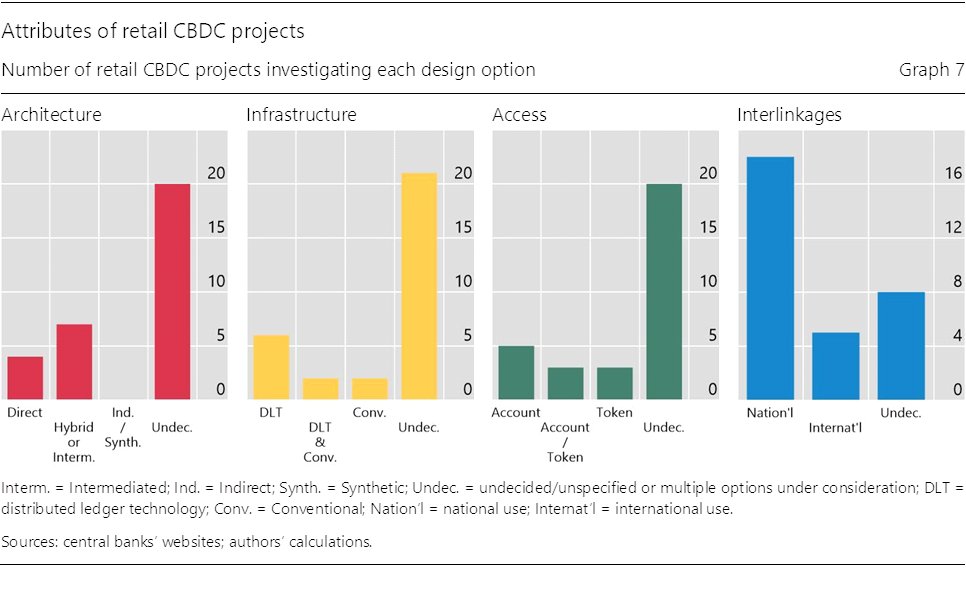
The fundamental design choice for a #CBDC is the architecture: what is the operational role of the central bank and the private sector?
ideas.repec.org/p/bis/biswps/9…
In the “Direct” model, the central bank takes a substantial operational role: the CBDC represents a… (1/6)
ideas.repec.org/p/bis/biswps/9…
In the “Direct” model, the central bank takes a substantial operational role: the CBDC represents a… (1/6)

direct claim on the central bank, which maintains retail accounts and executes all payments.
The “Hybrid” architecture we introduce is an intermediate solution. A CBDC represents a direct claim on the central bank. Private sector intermediaries handle payments, but…(2/6)
The “Hybrid” architecture we introduce is an intermediate solution. A CBDC represents a direct claim on the central bank. Private sector intermediaries handle payments, but…(2/6)
the central bank retains a copy of all retail CBDC holdings. This allows it to transfer retail CBDC holdings from one PSP to another in the event of a technical failure.
Some central banks might shy away from running a record of all retail data,…(3/6)
Some central banks might shy away from running a record of all retail data,…(3/6)
for example due to issues with privacy and data security. A variant is “intermediated” architecture, one in which the central bank records wholesale balances only.
Last, there is also an alternative to CBDC, fully backed payment accounts. In this… (4/6)
Last, there is also an alternative to CBDC, fully backed payment accounts. In this… (4/6)
“Indirect” (or "Synthetic"), the consumers' claim is on an intermediary, with the central bank keeping track only of wholesale accounts. Because households do not own central bank money, this design is not a CBDC.
For a discussion of… (5/6)
For a discussion of… (5/6)
the respective advantages and disadvantages, see: ideas.repec.org/p/bis/biswps/9…. (6/6)
• • •
Missing some Tweet in this thread? You can try to
force a refresh











